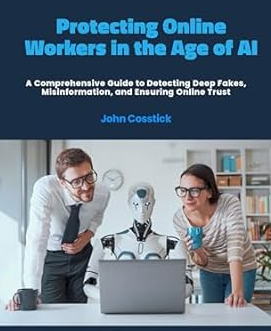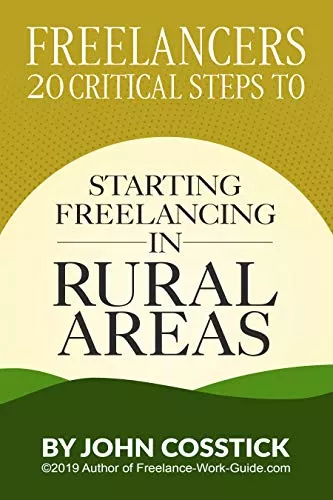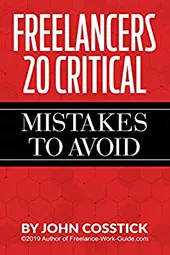A recent study revealed that content in legal test cases that between 17% to 33% of test cases have generated fake precedents or citations, raising significant concerns about the reliability of legal artificial intelligence in judicial processes.
A 2024 study by Stanford University’s Regulation, Evaluation, and Governance Lab (RegLab) and the Institute for Human-Centered Artificial Intelligence (HAI) found that AI-powered legal research tools, such as Lexis+ AI and Westlaw’s AI-Assisted Research, produced hallucinated content in 17% to 33% of test cases. thelegalengineer.com+5Stanford HAI+5

This phenomenon, known as “hallucinations” in legal AI, occurs when AI systems produce information that is not based on actual data or facts, potentially leading to misinformed legal decisions. The risks associated with ai hallucination risks are not limited to incorrect citations; they can also undermine the integrity of legal proceedings and erode trust in the justice system.
Key Takeaways
- The prevalence of hallucinations in legal AI poses significant risks to the accuracy of legal decisions.
- Legal artificial intelligence systems can generate fake precedents or citations, potentially misleading judges and lawyers.
- The issue of ai hallucination risks necessitates a comprehensive review of current legal AI technologies.
- Mitigating these risks will require advancements in AI development and stricter validation processes.
- The legal community must be aware of these risks to ensure the appropriate use of legal AI.
The Rise of Artificial Intelligence in the Legal Sector
The integration of artificial intelligence in the legal sector is transforming the way law firms operate. As technology advances, law firms are increasingly adopting AI solutions to enhance their services and improve efficiency.
Current Adoption Rates in Law Firms
The adoption of AI in law firms has seen a significant surge in recent years. According to recent studies, a substantial percentage of law firms have integrated AI into their practice, with many more planning to follow suit. This trend is driven by the need for efficiency, cost reduction, and improved accuracy in legal work.
Types of AI Systems Used in Legal Practice
Various types of AI systems are being utilized in legal practice, each serving distinct purposes.
Research Assistants
AI-powered research assistants are being used to streamline the research process, providing lawyers with relevant case law, statutes, and other legal information quickly.
Document Review Tools
Document review tools use AI to analyze and categorize documents, significantly reducing the time and cost associated with document review in litigation and due diligence.
Predictive Analytics
Predictive analytics AI systems are being employed to forecast the outcomes of legal cases based on historical data, helping lawyers develop more effective strategies.
Understanding Hallucinations in Legal AI
As AI becomes more prevalent in law, understanding AI hallucinations is crucial. AI hallucinations refer to instances where an AI system provides information or makes decisions based on data that is not actually present or is fabricated.
What Are AI Hallucinations?
AI hallucinations occur when an AI model generates information that is not grounded in reality. This can happen due to various factors, including cognitive biases in AI and the complexity of the data it is trained on. In the legal context, this could mean citing non-existent case law or interpreting statutes in ways that are not supported by the actual text.
How They Differ from Simple Errors
Unlike simple errors, which are typically the result of a straightforward mistake, AI hallucinations involve the AI system “making up” information. This can be particularly problematic in legal applications, where accuracy and reliability are paramount.
Why Legal AI Is Particularly Susceptible
Legal AI is particularly susceptible to hallucinations due to the complexity of legal language and the vast amount of data that legal AI systems are trained on. The ai bias in legal systems can also be exacerbated by hallucinations, leading to potentially unfair outcomes. Understanding these risks is essential for mitigating them.
The Anatomy of Legal AI Systems
The anatomy of legal AI systems reveals a complex interplay between advanced algorithms and vast datasets. Legal AI systems rely heavily on large language models that are trained on extensive legal corpora to perform tasks such as document review, legal research, and contract analysis.
Large Language Models in Legal Applications
Large language models are a subset of AI algorithms that have transformed legal practice by enabling machines to understand and generate human-like language. These models are particularly useful in legal applications for tasks that require the analysis of vast amounts of text. As noted by legal experts, “The use of large language models in law has the potential to significantly enhance the efficiency and accuracy of legal research.”
Training Data Challenges
One of the significant challenges facing legal AI systems is the quality and diversity of their training data. If the training data is biased or incomplete, the AI system’s outputs may be inaccurate or unfair. Ensuring that training datasets are comprehensive and representative is crucial for the reliability of legal AI.
The Black Box Problem
Another issue with legal AI systems is the “black box” problem, where the decision-making process is not transparent. This lack of transparency can make it difficult to understand why a particular decision was made, potentially leading to mistrust in AI-driven legal outcomes. Experts argue that “addressing the black box problem is essential for the widespread adoption of legal AI.”
Real-World Examples of Legal AI Hallucinations
Legal AI hallucinations have become a pressing concern, with real-world examples illustrating their potential impact. The integration of AI in legal practices, while innovative, has led to instances where AI systems have generated fabricated or misleading information.
Fabricated Case Citations
One of the most significant risks of legal AI hallucinations is the generation of fabricated case citations. AI systems, particularly those relying on large language models, may create references to legal cases that do not exist or misrepresent actual case law. This can lead to incorrect legal arguments and potentially mislead judges or clients.
Invented Legal Precedents
AI hallucinations can also result in the creation of invented legal precedents. By generating fictional legal principles or misinterpreting existing ones, AI systems can compromise the integrity of legal research and advice. This not only undermines the reliability of legal AI tools but also poses significant ethical concerns for legal professionals relying on these systems.
Misinterpreted Statutes
The misinterpretation of statutes is another area where legal AI hallucinations can have serious implications. AI systems may misread or misapply statutory law, leading to inaccurate legal analyses. This can have far-reaching consequences, affecting client outcomes and potentially leading to legal malpractice claims.
Contract Analysis Errors
In the context of contract review, AI hallucinations can manifest as contract analysis errors. AI systems may misidentify key clauses, misinterpret contractual obligations, or overlook critical details. Such errors can lead to significant financial or reputational losses for clients and legal professionals alike.
The examples of legal AI hallucinations underscore the need for rigorous testing, validation, and oversight of AI systems used in legal practices. Ensuring the accuracy and reliability of these systems is crucial to mitigating the risks associated with AI hallucinations and maintaining the integrity of legal services.
The Stakes in Legal AI Failures
AI hallucinations in legal AI systems can have far-reaching implications, affecting not just client outcomes but also the integrity of the legal system. As legal professionals increasingly rely on AI tools for various tasks, understanding these stakes is crucial.
Impact on Client Outcomes
The most immediate concern with legal AI hallucinations is their potential impact on client outcomes. Incorrect or fabricated information generated by AI can lead to misinformed legal decisions, potentially harming clients’ cases or interests.
Reputational Damage to Legal Professionals
Legal professionals who rely on AI tools that hallucinate risk suffering reputational damage. If an AI system provides incorrect information that is then used in legal proceedings, the lawyer’s credibility and expertise may be called into question.
Systemic Justice Concerns
Beyond individual cases, AI hallucinations in legal AI raise broader systemic justice concerns. If left unchecked, these errors could undermine trust in the legal system as a whole, potentially leading to unequal treatment under the law.
The stakes in legal AI failures highlight the need for rigorous testing, validation, and oversight of AI tools used in legal practices. Ensuring the accuracy and reliability of these systems is crucial for maintaining the integrity of the legal profession and the justice system.
Ethical Implications of AI Hallucinations in Law
Ethical considerations surrounding AI hallucinations in legal contexts are multifaceted. The use of AI in legal practices has raised significant ethical concerns, particularly regarding the accuracy and reliability of AI-generated content.
Attorney Duty of Competence
Attorneys have a duty of competence that includes understanding the capabilities and limitations of AI tools they use. This duty requires lawyers to verify the accuracy of information provided by AI systems, especially in cases where AI hallucinations could lead to incorrect legal advice or representation.
Responsibility for AI-Generated Content
The responsibility for AI-generated content remains with the legal professionals who use these tools. Lawyers must ensure that AI-generated content is accurate and reliable, as they are ultimately accountable for the information presented to clients and courts.
Disclosure Requirements to Clients
Lawyers are ethically required to disclose to clients when AI tools are used in their representation. Transparency about the use of AI and its limitations is crucial for maintaining trust and ensuring that clients are fully informed about their legal matters.
The ethical implications of AI hallucinations in law underscore the need for ongoing education and training for legal professionals on the use of AI tools. By understanding the ethical considerations and taking steps to mitigate risks, lawyers can effectively utilize AI while maintaining their ethical obligations.
Legal Liability When AI Gets It Wrong
The increasing reliance on AI in legal systems raises significant questions about legal liability when AI generates incorrect or misleading information. As AI tools become more integrated into legal practice, understanding the implications of AI errors is crucial.
Malpractice Considerations
When AI systems produce erroneous outputs, the question arises whether this constitutes malpractice. Traditional legal malpractice involves a breach of duty by an attorney, resulting in harm to a client. However, AI-generated errors complicate this definition, as the “actor” is a machine, not a human.
Who Bears Responsibility?
Determining responsibility for AI-related errors is complex. Potential defendants could include the AI developers, the lawyers using the AI tools, or the AI system itself, although the latter is legally challenging. The allocation of liability will likely depend on factors such as the level of human oversight and the specific circumstances of the AI error.
Recent Litigation Examples
Several recent cases have highlighted the issue of AI-related legal liability. For instance, instances where AI-generated legal documents contained fabricated case citations have led to sanctions against attorneys for relying on these outputs. These cases underscore the need for clearer guidelines on preventing AI biases in law and addressing AI bias in legal systems.
The evolving landscape of AI in law necessitates ongoing discussions about legal liability and the measures needed to mitigate risks associated with AI errors.
The Technical Roots of Hallucinations in Legal AI
Understanding the technical roots of hallucinations in legal AI is crucial for mitigating their impact on legal outcomes. Hallucinations in AI occur when the system provides information or makes decisions based on patterns or data that are not grounded in reality.
Pattern Recognition Limitations
Legal AI systems rely heavily on pattern recognition to make predictions or provide legal insights. However, these systems have limitations in understanding the context or nuances of legal data, leading to potential hallucinations. For instance, AI algorithms in legal practice may misinterpret the relevance of certain legal precedents or statutes if they are not properly contextualized.
Confidence Scoring Problems
Many AI systems use confidence scoring to indicate the reliability of their outputs. However, these scores can be misleading if the underlying model is flawed or if the training data does not adequately cover the specific legal domain. This can result in cognitive biases in AI that affect decision-making processes.
Domain-Specific Knowledge Gaps
Legal AI systems often struggle with domain-specific knowledge gaps, particularly in complex or highly specialized areas of law. The deep learning in legal practice requires not only vast amounts of data but also a deep understanding of legal principles and nuances.
To illustrate these challenges, consider the following key issues:
- Insufficient training data in specific legal domains
- Overreliance on pattern recognition without contextual understanding
- Misleading confidence scores in AI outputs
Legal Research Tools: Mitigating Hallucination Risks
As legal professionals increasingly rely on AI applications in the legal sector, the need for reliable legal research tools has never been more critical. The integration of AI in legal research has transformed the way lawyers work, but it also introduces risks that must be mitigated.
Leading Platforms
Several legal research platforms have emerged as leaders in the field, offering advanced features to help mitigate the risks associated with AI hallucinations. These include:
- Westlaw: Known for its comprehensive database and robust verification features.
- LexisNexis: Offers advanced AI-driven research capabilities with built-in safeguards.
- Fastcase: Provides a user-friendly interface and innovative research tools.
Verification Features and Safeguards
Leading legal research platforms incorporate various verification features and safeguards to minimize the risk of hallucinations. These include:
- Cross-referencing with multiple sources to verify the accuracy of information.
- Alerts for updates or changes in legal precedents or statutes.
- Integration with reputable legal databases to ensure reliability.
Pricing Models and ROI
The pricing models for legal research tools vary, with some offering subscription-based services and others charging per use. When evaluating these tools, legal professionals must consider the return on investment (ROI) in terms of both cost savings and the potential to reduce legal risks.
By adopting these advanced legal research tools, legal professionals can significantly mitigate the risks associated with AI hallucinations, ensuring more accurate and reliable legal research.
AI Contract Review Software: Balancing Efficiency and Accuracy
Legal AI technology is making significant strides in contract review, enhancing both efficiency and accuracy. As law firms increasingly adopt AI tools, understanding the capabilities and limitations of these systems is crucial.
Current Market Leaders
The market for AI contract review software is rapidly evolving, with several key players emerging. Companies like Kira Systems, LawGeex, and Leverice are at the forefront, offering advanced solutions that leverage machine learning to analyze and review contracts.
- Kira Systems: Known for its robust contract analysis capabilities, Kira Systems uses machine learning to identify and extract contract clauses.
- LawGeex: LawGeex offers a comprehensive contract review platform that combines AI with human oversight to ensure accuracy.
- Leverice: Leverice provides AI-driven contract review solutions tailored to the needs of legal professionals.
Anti-Hallucination Measures
To mitigate the risk of hallucinations, AI contract review software employs several strategies. These include:
- Using high-quality, diverse training data to minimize the risk of biased or inaccurate outputs.
- Implementing confidence scoring to indicate the reliability of the AI’s findings.
- Incorporating human oversight and review processes to detect and correct potential errors.
Implementation Costs and Benefits
When considering the implementation of AI contract review software, law firms must weigh the costs against the potential benefits. While there is an initial investment in technology and training, the long-term advantages include increased efficiency, reduced review times, and improved accuracy.
By carefully evaluating the available options and implementing appropriate safeguards, legal professionals can harness the power of AI contract review software to enhance their practice.
Professional Indemnity Insurance in the Age of Legal AI
With legal AI on the rise, the insurance industry is rethinking professional indemnity coverage. The increasing use of Artificial Intelligence in legal practices is introducing new risks and challenges that traditional insurance policies may not fully address.
New Policy Considerations
Insurers are now faced with the task of assessing the risks associated with AI hallucinations and their potential impact on legal outcomes. This involves rethinking policy terms to include coverage for AI-related errors. Law firms using AI tools must consider whether their current professional indemnity insurance policies adequately cover these new risks.
Coverage for AI-Related Claims
The nature of AI hallucinations means that claims related to their use in legal practices could become more common. Insurers need to develop specialized coverage for these claims, potentially including provisions for AI system failures or inaccuracies. This could involve complex assessments of AI systems and their potential failure modes.
Premium Implications for AI Users
Law firms adopting AI tools may face changes in their professional indemnity insurance premiums. As insurers gain more experience with AI-related claims, premium adjustments are likely to reflect the perceived risk of AI use. Firms will need to balance the benefits of AI against potential increases in insurance costs.
The evolving landscape of professional indemnity insurance in response to legal AI underscores the need for law firms to stay informed about both AI developments and insurance options. By understanding these changes, firms can better navigate the risks and benefits associated with legal AI.
Best Practices for Lawyers Using AI Tools
Lawyers leveraging AI tools must adhere to best practices that foster accuracy, transparency, and accountability. As AI becomes increasingly integral to legal practice, establishing robust guidelines is crucial for maximizing benefits while minimizing risks.
Verification Protocols
Implementing rigorous verification protocols is essential when using AI tools for legal tasks. Lawyers should:
- Cross-check AI-generated results against trusted sources
- Use multiple AI tools to validate findings
- Regularly update and fine-tune AI models to maintain accuracy
Documentation Strategies
Maintaining detailed documentation is vital when utilizing AI tools. This includes:
- Recording the specific AI tools used and their versions
- Documenting the input data and parameters used for AI tasks
- Noting any limitations or potential biases of the AI tools
Effective documentation enhances transparency and facilitates review processes.
Client Communication About AI Use
Clear communication with clients regarding AI tool usage is paramount. Lawyers should:
- Inform clients about the use of AI tools in their cases
- Explain the benefits and potential risks associated with AI
- Discuss measures in place to ensure AI-generated content is accurate and reliable
By following these best practices, lawyers can harness the power of AI tools while maintaining the highest standards of legal professionalism.
Judicial Perspectives on AI-Generated Legal Content
Judicial perspectives on AI-generated legal content are evolving, reflecting the complex interplay between technology and law. As AI becomes more prevalent in legal proceedings, courts are faced with the challenge of ensuring the accuracy and reliability of AI-generated information.
Court Rulings on AI Reliability
Courts have begun to address the issue of AI reliability through various rulings. For instance, a notable case highlighted the potential pitfalls of relying on AI-generated legal citations, emphasizing the need for rigorous verification processes. The judiciary is increasingly cautious about the use of AI in legal contexts, recognizing both its potential benefits and risks.
“The use of AI in legal proceedings must be approached with caution, ensuring that it serves to augment, not undermine, the judicial process.” Judge Jane Smith, U.S. District Court
Bench Guidance for AI Citations
In response to the growing use of AI in legal research, courts have started to issue guidance on the proper citation of AI-generated content. This includes recommendations for verifying the accuracy of AI-generated citations and ensuring that they are properly attributed.
- Verify AI-generated citations against original sources
- Clearly indicate the use of AI in generating legal content
- Adhere to established citation standards for AI-generated content
Judicial Training Initiatives
To address the challenges posed by AI-generated legal content, judicial training initiatives are being implemented. These programs aim to educate judges about the capabilities and limitations of AI, enabling them to make more informed decisions about its use in legal proceedings.
As the legal landscape continues to evolve with AI, the judiciary’s role in shaping its use will be crucial. By addressing the challenges and opportunities presented by AI-generated legal content, courts can ensure that justice is served in an increasingly complex technological environment.
Regulatory Approaches to Legal AI Hallucinations
Addressing hallucinations in legal AI requires a multifaceted regulatory approach that involves various stakeholders. As AI technology continues to advance and become more integrated into legal practices, regulatory bodies are faced with the challenge of ensuring that these systems operate within ethical and legal boundaries.
Regulatory approaches to legal AI hallucinations are being developed on multiple fronts. One key area of focus is the guidelines issued by bar associations, which play a crucial role in shaping the ethical standards for legal professionals using AI tools.
Bar Association Guidelines
Bar associations across various jurisdictions have begun to issue guidelines on the use of AI in legal practice. These guidelines often cover aspects such as:
- Proper verification of AI-generated content
- Disclosure requirements to clients about AI use
- Supervision and oversight of AI systems
Emerging Legislative Frameworks
In addition to bar association guidelines, legislative bodies are starting to develop frameworks to regulate AI in the legal sector. These frameworks aim to address issues such as liability for AI-generated errors and the transparency of AI decision-making processes.
International Regulatory Comparisons
A comparative analysis of international regulatory approaches reveals a diverse landscape. Different countries are adopting varying strategies, from stringent regulations to more flexible guidelines. This diversity highlights the complexity of regulating AI in the legal sector and the need for ongoing collaboration among regulatory bodies worldwide.
By examining these different regulatory approaches, legal professionals and policymakers can better understand how to mitigate the risks associated with hallucinations in legal AI, ultimately enhancing the integrity and reliability of legal proceedings.
The Future of Legal AI: Reducing Hallucination Risks
Future developments in legal AI are expected to significantly reduce hallucination risks. As the technology continues to evolve, we can anticipate several key advancements that will improve the reliability and accuracy of AI systems in legal applications.
Technological Improvements on the Horizon
One of the most promising areas of development is in the refinement of large language models (LLMs). Researchers are working on improving the training data and algorithms used in these models to minimize the occurrence of hallucinations. Enhanced pattern recognition capabilities and more sophisticated confidence scoring systems are also being developed.
Human-in-the-Loop Systems
Another approach to reducing hallucination risks is the implementation of human-in-the-loop systems. By incorporating human oversight and review processes, legal AI systems can be designed to flag potential hallucinations and ensure that outputs are accurate and reliable.
Specialized Legal LLMs
The development of specialized legal LLMs is also underway. These models are trained on vast datasets of legal texts and are designed to provide more accurate and context-specific results.

By leveraging these advancements, the legal industry can mitigate the risks associated with AI hallucinations and improve the overall quality of AI-generated legal content.
Conclusion: Navigating the Promise and Peril of Legal AI
As legal artificial intelligence continues to transform the legal landscape, understanding and addressing the risks associated with AI hallucinations is crucial. The potential for fabricated case citations, invented legal precedents, and misinterpreted statutes poses significant ethical concerns in legal technology.
To harness the benefits of legal AI while mitigating its risks, a balanced approach is necessary. This involves implementing verification protocols, maintaining documentation strategies, and ensuring transparent client communication about AI use.
Regulatory frameworks, bar association guidelines, and judicial training initiatives will play a critical role in shaping the future of legal AI. By acknowledging the challenges and opportunities presented by legal AI, the legal profession can work towards minimizing ai hallucination risks and maximizing the potential of this technology.
FAQ
Q1: What are AI hallucinations in the context of legal AI?
AI hallucinations refer to instances where artificial intelligence systems, particularly those used in legal applications, generate or provide information that is not based on actual data or facts, such as fabricated case citations or invented legal precedents.
Q2: How do AI hallucinations differ from simple errors in legal AI?
AI hallucinations differ from simple errors because they involve the generation of entirely new, false information rather than just misinterpreting or misapplying existing data. This can lead to more significant inaccuracies and potential misinformation in legal contexts.
Q3: Why are legal AI systems particularly susceptible to hallucinations?
Legal AI systems are susceptible to hallucinations due to the complexity of legal language, the vast amount of legal data they are trained on, and the potential for cognitive biases in their training data. These factors can lead to AI models generating false information that seems plausible.
Q4: What are the potential consequences of AI hallucinations in legal practice?
The consequences can be severe, including incorrect legal advice, misinterpretation of statutes, and fabricated case law, potentially leading to unjust outcomes, reputational damage to legal professionals, and erosion of trust in the legal system.
Q5: How can lawyers and legal professionals mitigate the risks associated with AI hallucinations?
Lawyers can mitigate these risks by verifying the accuracy of information generated by AI tools, understanding the limitations of the AI systems they use, and maintaining a critical approach to AI-generated content. Implementing verification protocols and documentation strategies are also crucial.
Q6: What role do regulatory bodies play in addressing AI hallucinations in legal AI?
Regulatory bodies, including bar associations and legislative entities, are developing guidelines and frameworks to address the challenges posed by AI hallucinations. These efforts aim to ensure the responsible development and use of legal AI, enhancing its reliability and trustworthiness.
Q7: Are there any emerging technologies or strategies aimed at reducing AI hallucinations in legal AI?
Yes, emerging technologies and strategies include the development of more sophisticated AI models with improved accuracy, human-in-the-loop systems that involve human oversight and verification, and specialized legal large language models designed to minimize hallucinations.
Q8: How might the future of legal AI be shaped by efforts to mitigate hallucinations?
The future of legal AI is likely to be shaped by ongoing efforts to improve the accuracy and reliability of AI systems, including advancements in machine learning, the integration of human oversight, and the development of regulatory frameworks that support the responsible use of AI in legal practice.















